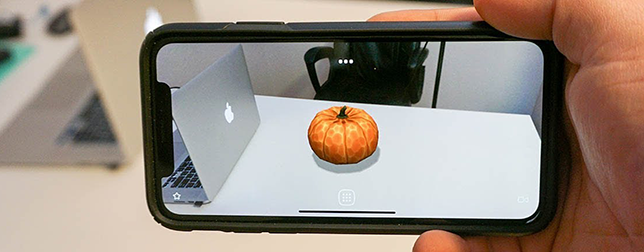As more companies adopt augmented reality (AR) technology, acceptance of AR as a viable technology is gaining momentum.
“We are pulling out of the trough of disillusionment and into the slope of enlightenment,” said Allan Cook, managing director for Deloitte Consulting, during a presentation at the Augmented World Expo in Santa Clara, California. “We believe that a third of our business here in the United States is going to shift to digital reality over the next three to five years.”
“We’re just at the beginning of these critical use cases,” Cook said. “It’s about incorporating AR into an everyday, mundane task.”
Read more Vuzix Partners With Plessey to Develop Next-Gen AR Smartglasses Using MicroLED Technology
Yet, a crucial piece of AR technology remains incomplete and will likely restrict extensive enterprise adoption until it is settled: Augmented Reality needs to become part of the existing line-up of enterprise tech products.
“It’s not just about the experience,” explained Cook. “It’s how to get it into the current technology.”
With the launch of Qualcomm’s Snapdragon XR1, the first chip created especially for AR and VR devices, it looks like that AR ecosystem providers may be making strides in this area. The new Qualcomm processor could lower the cost of entry for companies seeking to introduce new AR or VR products.
Cloud technologies are also starting to enter the market. One of the exhibiting companies, 6D.ai, is creating a tool for developers that will enable ways mainly to visualize a 3-D map of the world.
The cloud created by 6D.ai would make the process of identifying objects in the real world much easier.
U.S. Navy researchers are following a project called GunnAR that started in 2016. The project involves the use of AR-equipped headsets that would provide onboard artillery gunners visual firing cues with target coordinates rather than verbal commands shouted by a nearby sailor in what could be described a very noisy environment.
Read more Samsung and Apple Reportedly Working on a Wireless AR/VR Headset
According to Digi-Capital, AR (mobile AR, smartglasses) could approach three and a half billion installed base and $85 billion to $90 billion revenue within 5 years. At the same time, VR (mobile, standalone, console, PC) might deliver 50 to 60 million installed base and $10 billion to $15 billion. (Note: AR/VR adviser [reports/tools, company network, strategy consulting, investment banking] Digi-Capital’s new Augmented/Virtual Reality Report Q1 2018 base case is that even with 900 million installed base for ARKit/ARCore by the end of this year, AR/VR revenue will only start to scale in 2019).
According to the PwC/CB Insights MoneyTree Report, there were 71 deals worth $1.5 billion of venture capital investment in AR and VR in 2016.
Much of that money is going into AR initiatives for businesses rather than consumers. In that space, the market will be dominated by wearable head gear for workers which enables them to work hands-free while servicing machinery, for example. ABI Research says head-worn devices will make up 90% of the enterprise AR device installed by 2021.
Scott Montgomerie is the co-founder and CEO of Scope AR, a San Francisco-based creator of augmented-reality software. He believes AR will soon be ubiquitous, whether on people’s head or in their hands.
“I would see right now as being an inflection point, and if it’s not right now, it’s not too far away,” Montgomerie says, noting a spike in real-use cases and real investments by companies. “I think it’s just on the verge of explosion,” Montgomerie said.













